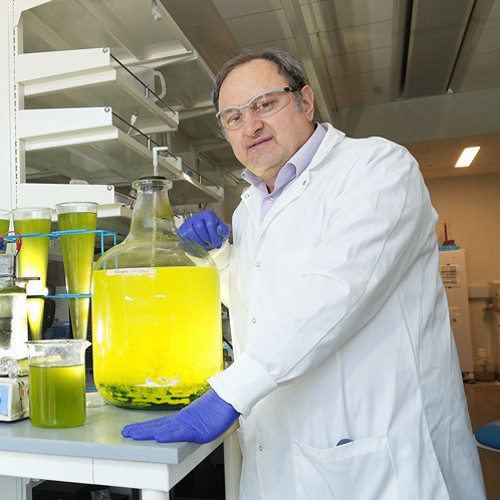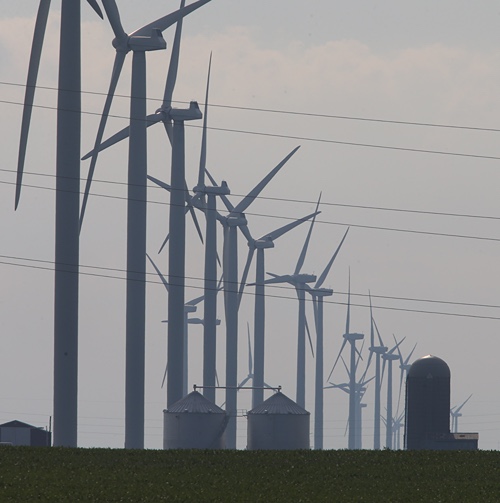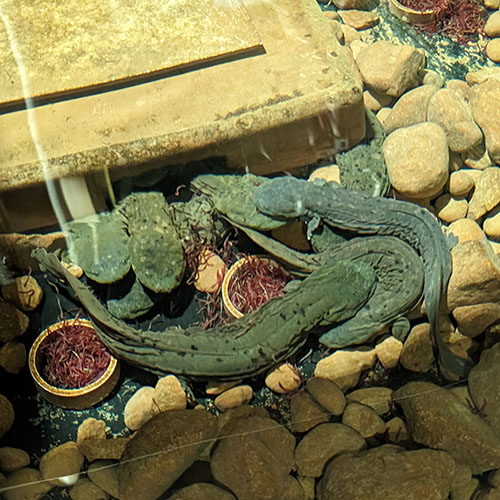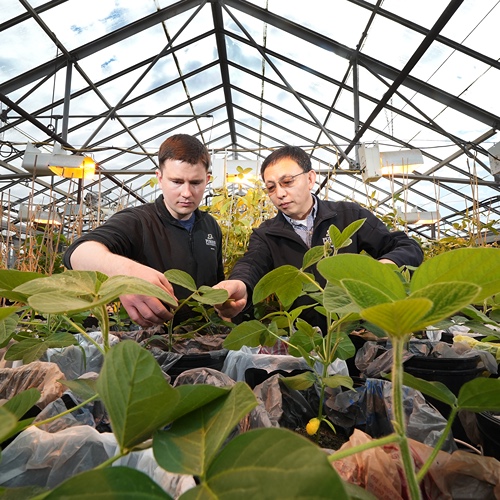I met Gabby Dennis at her favorite nature park in West Lafayette, just a short distance from Purdue’s campus. As she walked, she rattled off the bird species she saw and explained that these birds stick around all year. She stopped in her tracks when she noticed a pair of woodpeckers.
On one side of a tree was one of the smallest woodpecker species. On the other side of the same tree, she spotted one of the largest species. Dennis quickly (and quietly) turned on her camera, zoomed in, and began shooting photos and videos.
“Since I was a little kid, I’ve always really been into wildlife,” said the sophomore from Toledo, Ohio.
 Gabby Dennis, a sophomore wildlife major from Toledo, Ohio, turned the pandemic into an opportunity to improve her skills in wildlife photography. It is a way for her to combine two things she loves. Photo by Sami DeLey.
Gabby Dennis, a sophomore wildlife major from Toledo, Ohio, turned the pandemic into an opportunity to improve her skills in wildlife photography. It is a way for her to combine two things she loves. Photo by Sami DeLey. Given her lifelong appreciation, it’s probably no surprise she is a wildlife major. It’s also no surprise that Dennis found it difficult to be inside all the time when COVID-19 hit. So, she went on hikes away from people as an escape. She also started bringing her camera. Capturing photos was a fun way to document her findings.
“I enjoy taking pictures of animals because it’s fun and also connects with my major and what I want to do after college,” Dennis said.
Dennis explained that she has always liked photography and animals, but never thought to combine the two. When she started taking photos during the pandemic, she wasn’t quite sure what to expect and said it was hard at first.
“Some shots are really difficult to get, because birds can be small and it’s hard to get close to them without scaring them off,” she explained.
The process of taking wildlife photos requires a lot of patience, which Dennis loves. So, she practiced. Dennis shot a lot of photos and, over time, began to notice that she was getting really good at capturing high-quality images.
“I had a realization that this hobby (which essentially transpired from the pandemic) was becoming something that allowed me to explore something I love and to share it with others,” Dennis said.
Her main method of sharing is her Instagram page. Her photos and videos always seem to include something interesting or unique about the subjects in the photo.
As Dennis got more serious about her photography and videography, she decided to upgrade her camera and continue to capture wildlife. While she said the upgrade helped the quality of her work, she still credits any improvements in the photos to her patience.
Dennis points her camera at many different animals, but she admits she keeps returning to one subject over and over.
“I’ve always been interested in birds and the diversity of the different species that you can work with,” Dennis said.
When pandemic restrictions eased, she was able to research birds again. She said she loves the work, because doing so gives her a different perspective for her to see them up close.
“I really enjoy the hands-on opportunities I get to explore within my major,” she said.
Part of the research she gets to perform as a wildlife major is banding birds for research, which she called one of her favorite activities. Researchers band birds so other researchers can see where birds are coming from and learn more about them.
“I enjoy taking photos and videos of wildlife but seeing them up close and learning about the amazing things they can do is also exciting for me,” she said.
Dennis’ said the photos she takes allow people to see the beauty of birds up-close, something she gets to see in research, but many others do not. It is one way that she can share the beauty and wonder of wildlife with others. She said her research and photography helped her develop an even deeper love for wildlife and she hopes to pursue both in the future, continuing to share her love of wildlife with others.
Dennis found a way to combine her love and passion for wildlife with her hobby of photography to make a difficult time fun and meaningful.
Find out more
Purdue Forestry and Natural Resources
Sami DeLey earned her bachelor's degree in agricultural communication in 2023 from Agricultural Sciences Education and Communication





